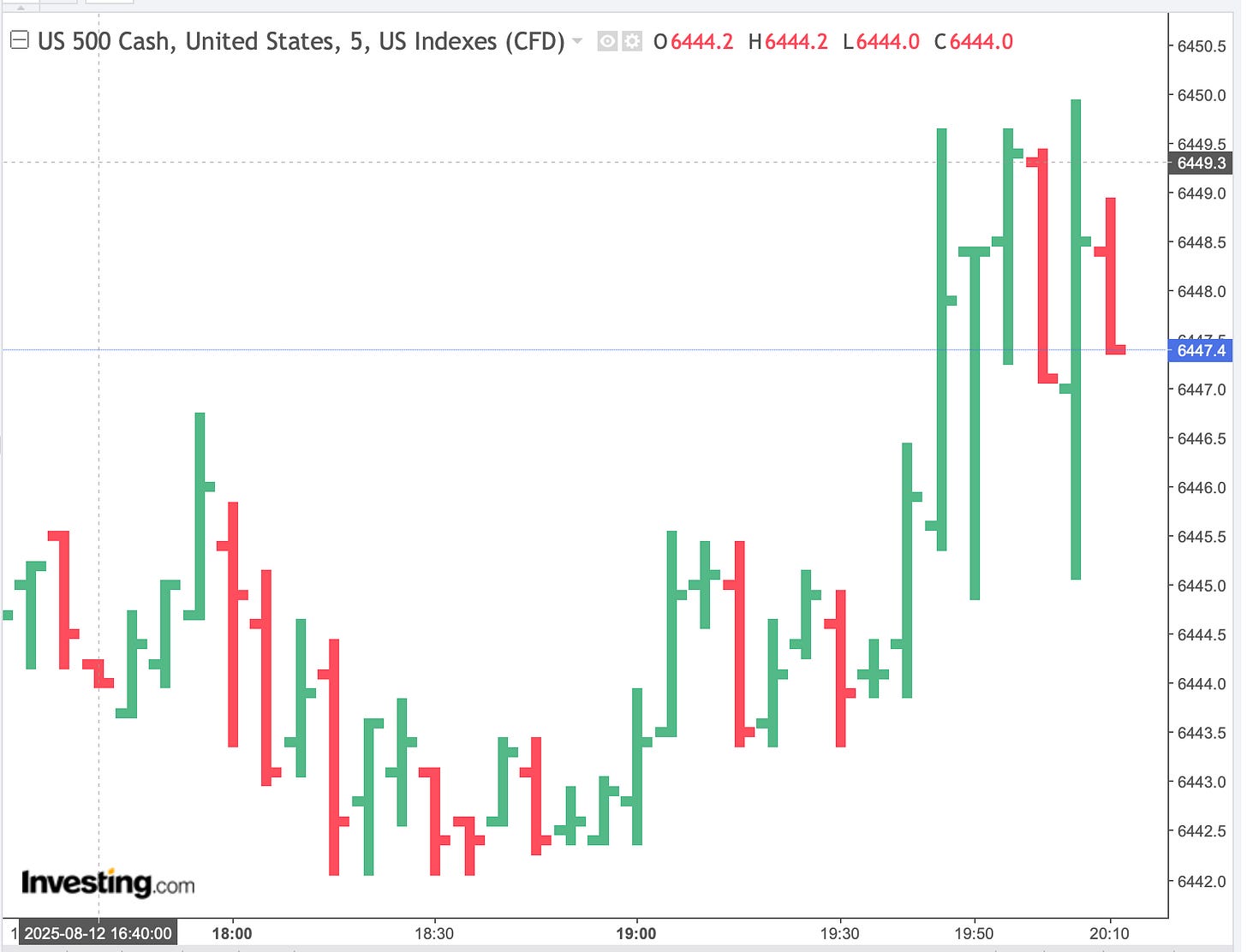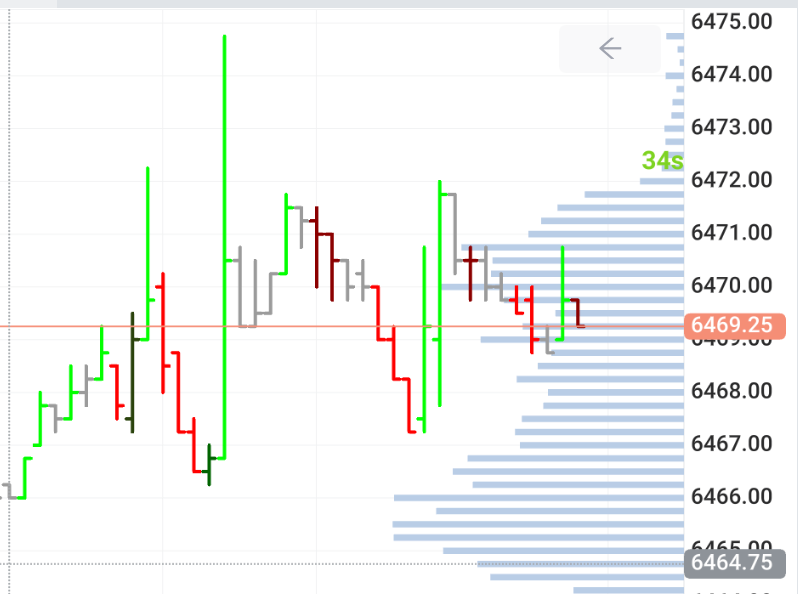The Global Clock Strikes: Pendulum Swing
At 7:47 PM ET, the market’s tempo shifted. In the four minutes leading up to that moment, I walked through in real-time how and why the next burst would occur.
The video is timestamped.
The logic was laid out.
And then the clock struck.
Aftershock
The burst triggered a secondary reaction — another green spike as algorithms adjusted and cross-market rebalancing finished. This is the echo you get when the clock chimes: other markets keep ringing for a moment before settling.
The Aftermath
Minutes later, the tape reverted to equilibrium:
Volume compressed back to pre-burst levels.
Price oscillated tightly around the 6469–6471 high-volume node, where liquidity providers re-anchored.
The structural “clock energy” dissipated, leaving a reset state — until the next strike.
Why It Matters
This wasn’t news.
It wasn’t random.
It was authored — staged, forecasted, and executed into a predictable market response.
The chart tells the story in three acts:
Pre-burst calm.
The strike.
The fade into balance.
The global market clock doesn’t just measure time.
It sets it.
And when you set it right, the whole street — from equity index futures to bonds to overseas markets — responds in tempo.






